Fuse is an important electronic component in electrical circuits. It is a device that protects an electrical circuit from overload, short circuit and other problems. Let's join Amazen to learn more clearly about what a fuse is and its structure and operating principle through the article below!
1. What is a fuse?
A fuse is an electrical device used to protect equipment and the power grid from short circuits, thereby limiting fires and explosions. More specifically, a fuse is a device used to protect electrical wires, equipment, and circuits in the event of an overloaded power source or circuit. Fuses are built into the electrical system. They are directly connected between electrical conductors and electrical devices. Fuses have a simple structure, small size and low price, so they are widely used in today's electrical systems.
Fuse image
2. Structure of fuse
The structure of the fuse is quite simple. The most important part of a fuse is the lead wire that is connected in series with the two leads in the circuit. Other parts such as: fuse holder, plug, fuse cover, etc. Specifically, the structure is as follows:
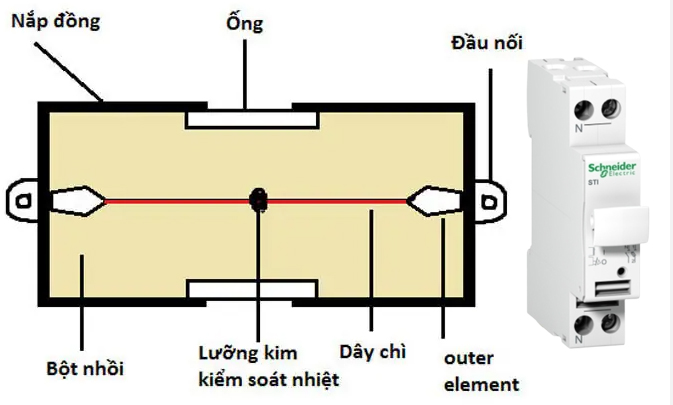
Structure of fuse
Circuit breaker element
The circuit breaker element is the main part of the fuse, it possesses a very small resistivity value. The circuit breaker element has the function of sensing the value of the current passing through. This element is usually made of silver, copper, etc. in wire form (circular cross-section) or thin tape.
Fuse body
The fuse body must ensure two factors: mechanical strength and thermal conductivity, to withstand sudden changes without being damaged. Therefore, the fuse body is usually made of glass, ceramic or equivalent material.
Filling material
Filling material used to enclose the circuit breaker element in the fuse body. This material has the ability to absorb energy generated by the arc. At the same time, they must ensure electrical insulation in case a circuit breaker occurs. Therefore, the filling material for fuses is usually granular silicate.
Connectors
The connector fixes the fuse at the circuit breaker and ensures good electrical contact.
3. Classification of fuses
Fuses are quite diverse in type and depending on the task, fuses can be classified:
- According to operating environment:
+ High voltage fuse: used on electrical systems up to 115,000 volts AC. High voltage fuses are used to protect instrument transformers used for measuring electricity, or for small power transformers where the cost of the circuit breaker is not covered by the warranty.
+ Low voltage fuse
+ Thermal fuse: often found in consumer devices such as coffee makers; hair dryers or transformers that power small consumer electronics. Used in environments with temperature changes.
- According to structure:
+ Open type fuse: has no outer cover.
+ Screw type fuse: Screwed into a threaded hole on the circuit and can be easily removed to replace another fuse.
+ Tube fuse: The lead wire is usually wrapped in a glass tube.
+ Box fuse: Stored in a sealed box.
- According to characteristics:
+ Ceramic fuse: The lead wire is covered outside with a ceramic. The advantage is that it is easy to remove and install without electric shock or injury. It is used in electrical wiring and small industries.
+ Box fuse: fuse is kept in a sealed box.
+ Self-falling fuse: this type of fuse will fall automatically when burned, used to protect outdoor voltage.
+ Tube fuse: includes a tube, a fuse and a set of connecting wires. The fuse base and fuse cover are attached to the fuse wire through a wire loop.
+ Exploded fuse: when operating, it makes an exploding sound. A fuse has the characteristic of exploding when it exceeds the rated current written on it.
- According to the number of uses: fuses can be used once, fuses can be replaced, fuses can be self-connected.
4. Principle of operation of fuses
Fuses operate on the principle of self-melting or bending to separate from the circuit when the current in the circuit suddenly increases. To better understand, let's analyze the working principle of fuses in two cases: when operating with rated current and when a short circuit occurs.
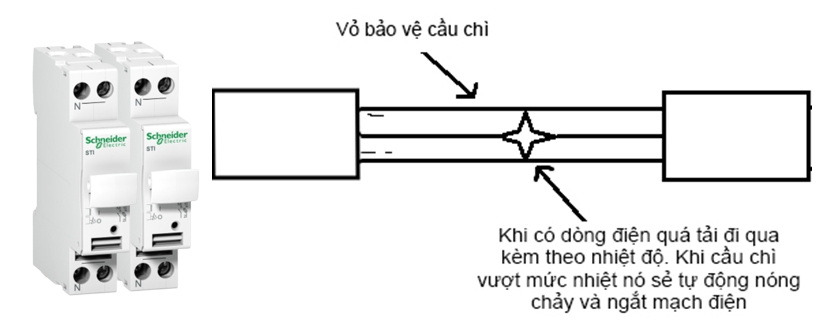
Operating principle of fuse
When the circuit works normally: When normal, a rated current flows through the fuse. The heat generated does not cause melting. Thermal balance is established without causing aging or damage to any fuse element.
When a short circuit occurs: At this time, the short circuit current is greater than the rated current. The balance on the fuse is destroyed. Heat energy increases, melting the short-circuit element of the fuse, thereby opening the circuit at both ends of the fuse.
5. Symbol of a fuse in an electrical circuit
- The above symbols are often printed on the surface of the fuse or on its packaging to identify and distinguish different types of fuses in the circuit. Fuses are denoted by standard symbols in electrical circuits. Below are some common types of fuse symbols:
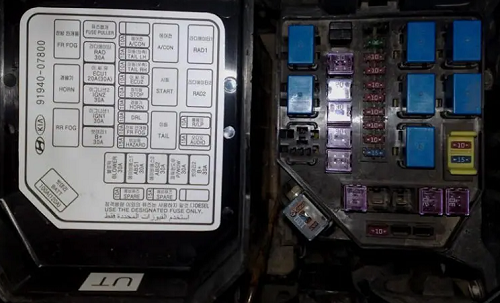
Fuse symbol
+ F: Fast-acting fuse symbol
+ T: Time-delay fuse symbol
+ FF: Fast-acting dual-element fuse symbol
+ J: Waterproof fuse symbol (Waterproof fuse)
+ H: Special, noise-resistant fuse symbol (Noise-resistant fuse)
+ L: Small fuse symbol (Small fuse)
+ M: Large fuse symbol (Large fuse)
+ G: Vibration-resistant fuse symbol (Vibration-resistant fuse)
6. Advantages of fuses compared to Aptomats
Fuses and circuit breakers are both used to protect devices against the risk of overload and short circuit. However, each type has its own advantages compared to each other. Advantages of Fuse over Aptomat include:
- Quick response: The fuse responds quickly to current overloads and short circuits, helping to protect electrical equipment from damage. Meanwhile, the Aptomat may need some time to react and turn off the power when the current is overloaded.
- High response to large currents: Fuse can respond to larger currents than Aptomat. This is because fuses are designed to withstand higher currents, while fuses have a current limit.
- High reliability: The fuse has no mechanical parts, helping to increase the reliability and durability of the device. Meanwhile, Aptomats may have mechanical parts, resulting in lower reliability and durability compared to fuses.
However, Aptomat also has advantages such as automatic recovery and remote control ability. Therefore, the use of fuse or circuit breaker will depend on specific requirements.

Advantages of fuses compared to Aptomats
7. Popular types of fuses today
1-way electric fuse
This type of fuse is small in size and works very stably. Because the direct current has a constant value greater than 0, it is difficult to break the circuit and there is an electric arc between the melted wires. Therefore, the electrodes of the fuse must have a large distance.
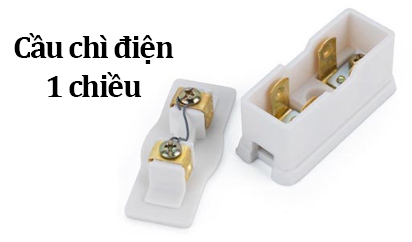
1-way electric fuse
DC 1-way fuse provides maximum protection for battery modules and battery packs. Also provides the ability to effectively clear DC fault lines. This type of fuse has been designed and tested on devices that use DC current.
3-phase electric fuse (AC fuse)
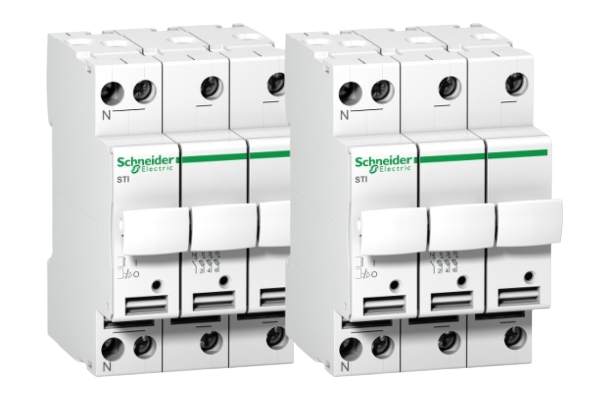
3 phase electric fuse
AC fuses are small in size, oscillating 50-60 times per second from smallest value to maximum value. So when there is no electric current formed between the molten wires. They are specialized for 3-phase electricity such as low voltage.
Isolation fuse
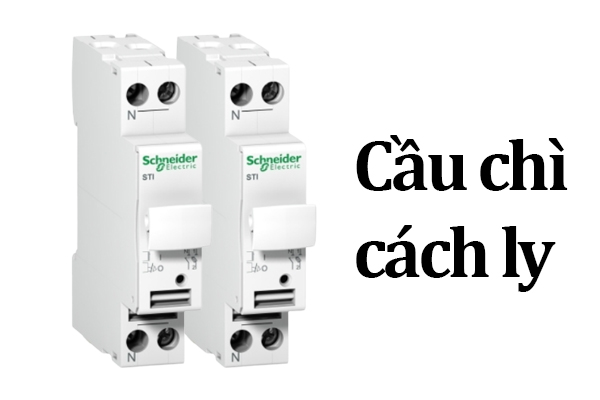
Isolating fuse
This type of fuse is capable of protecting against overload or short circuit in industrial circuits. The design of the modern isolation fuse meets many high electrical standards, especially IEC 947-3 standard. The device has a timer and light sensor feature which is also very good.
Low voltage fuse
This type of low-voltage fuse has many types:
+ Kit-kat type fuse: This type is made from ceramic to hold the lead wire, easy to remove and safe. The material is made from lead, tin, aluminum, copper, etc.
+ Striker type fuse: This type is used to close and release an electrical circuit.
+ Switch type fuse: Includes a fuse that uses low or medium voltage and has no metal cover.
+ Voltage drop fuse: This type will melt and fall under the influence of gravity. Has the function of protecting outdoor transformers.
8. Instructions for replacing household electrical fuses yourself
Step 1: Turn off the power
If you want to repair or replace, you must go through the step of disconnecting the power source. In order to bring you safety during work.
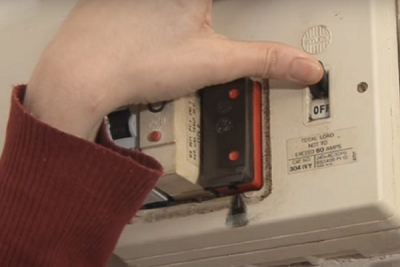
Turn off the power
Step 2: Check the power outlet
Check the electrical systems in the family and find out the cause of electrical fuses. From there, fix it to avoid exploding again.
Step 3: Find the location of the burned fuse wire
Fuses are usually located in electrical switchboard boxes or electric meters in the home. In case there are multiple fuse wires, you need to separate one wire. To check whether it is broken or not?
Step 4: Choose the appropriate fuse
You need to replace the fuse wire using a wire carrying 5A current. The electrical heating circuit is 15 - 20 A. The electrical outlet and cooking circuit use a wire with a current of 30 A.
Avoid replacing wires with higher amperage. The reason is that the ability to turn off the power when there is a problem is not high.
Step 5: Replace the fuse wire
Then you should remove the screws at both ends of the fuse. Then replace the broken fuse. However, you should pay attention to the wire passing through the area in the middle of the fuse. Wind the wire around the first screw, then the second screw. At the same time, use a screwdriver to tighten it
Step 6: Install the fuse in the box
Finally, install the fuse into the electrical outlet where the main circuit breaker is located. Next, check operation again by turning on the power source. If the household electrical system is used normally
9. Application of fuses
- Fuses are often used to protect wires, electrical equipment, electric motors, transformers, control circuits, lighting circuits...
- Reusable fuses are often widely used in civil circuits and power transmission lines.
- Disposable fuses are mainly installed in electrical equipment such as dryers, coffee makers, etc.

Application of fuses
10. Top popular fuse brands
Fuse HY-F15 Series Hanyoung brand
- The LED lights up when the bridge is broken
- Safety cover installation structure
- Structure installed on rails
- Optional products 1P, 2P, 3P ensure simple and convenient installation
- The material used to make the stand body is nylon glass fiber, which is extremely insulating and heat resistant
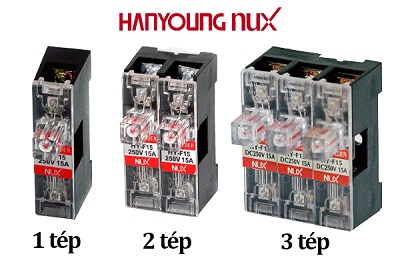
Fuse HY-F15 Series
Reputable Hanyoung fuse supplier: https://amazen.com.vn/cau-chi/hanyoung.html
STi Series fuses brand Schneider
Currently, STi Schneider fuses are the top choice of many customers in setting up used electrical systems. This product plays an important role in protecting electrical circuits in the safest way.
Basic technical parameter
- Type: isolated fuse
- Number of poles: 1P, 2P, 3P
- Rated voltage: 500V
- Function: overload protection and short circuit protection
- Design standard: IEC 947.3
Functional characteristics
With today's most modern and advanced production process, the Schneider fuse brand has created the STi Schneider model with outstanding features. It helps the device to fulfill its protective role in the electrical circuit system when selected.
- The device is made from high-quality plastic so it can adapt well to environmental conditions with large temperature ranges. Usually, the company's STi fuses can operate well in temperatures from -20 to 60 degrees Celsius.
- Compact and simple design so users can easily install and use.
- Products have a variety of sizes and colors so users can choose to suit their needs.
- The device can be combined with lead pipes of type aM, aG (gl –GL)
- The device structure is sturdy, with protection level reaching P20.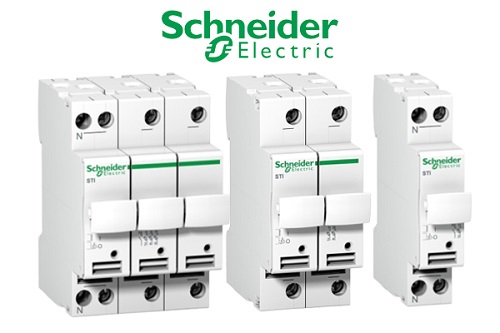
STi Schneider fuse
See more information about STi Schneider fuses at: https://amazen.com.vn/cau-chi.html?attr=acti9-sti-schneider-series
Chint brand RT28 Series fuses
Featured
- Electrical rating: AC380V/500V, up to 125A
- Application: protect power distribution equipment from overload and short circuit
- The fuse indicator device (code "X") of the fuse consists of a Neon light and a resistor
- Standard: IEC 60269
Overall dimensions are installed
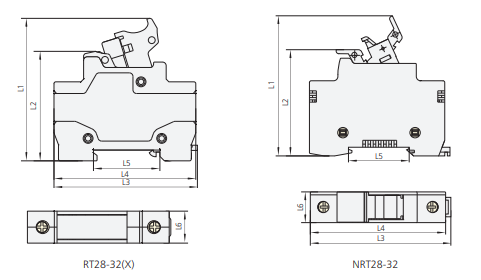
Overall dimensions and installation of RT28 Series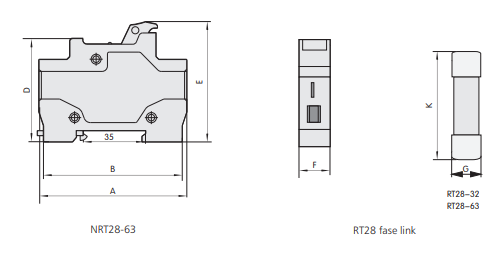
For more details, please refer to: Amazen.com.vn
Epilogue
Above is all the most important and basic content about the Fuse product line. Hopefully the article content will assist you in the process of learning, choosing to buy and operate this line of automation equipment.
In case you need to buy a semiconductor relay or have any questions or need further advice, please contact Amazen via:
Hotline: 0934 399 068 - Sales: 0938 072 058
Email: amazen@amazen.com.vn
With a team of highly specialized technical support and sales consultants, our company is confident that it will bring customers the best purchasing experience.
Amazen commits that all glass relay devices we currently provide are genuine, 100% brand new, quality guaranteed and fully accompanied by CO/CQ certification documents.